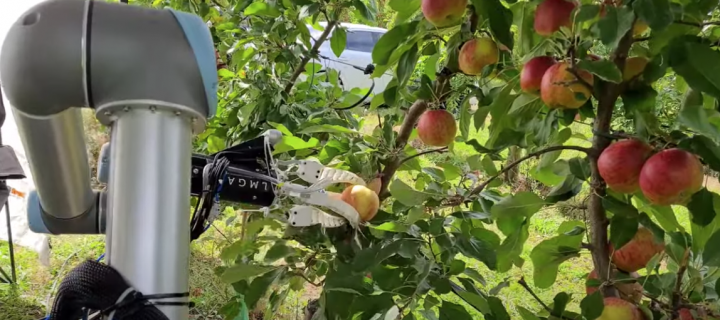One of the challenges that agricultural businesses faced especially here in Austria during the Covid crisis, was the tremendous shortage of manual labor during various harvesting seasons. At the beginning of spring, one of the first agricultural product in our region is asparagus. Harvesting season for asparagus is extremely short, so a spike of manual, and mostly foreign labour is needed to crop the valuable vegetable.
Covid crisis and the closing of national borders were further increasing the already tense situation of acquiring enough manual labor during that harvesting season.
Same happened later the same year for harvesting apples, pear and grapes in our region, which more and more became a challenge for local agricultural businesses. While they were already investing a lot in automatic watering, innovative biological pest control, harvesting still is a traditional manual approach where human labour is hard to come by.
Needless to say that automation, artificial intelligence and robotics will be one of the most important success factors for agricultural businesses in the future. As manual labor is becoming more and more expensive and limited in terms of application, robotics is the only way to overcome that tremendous need in the future. It’s comparable to the need of increased robotics research within the care of elderly people, where we already know that we will not be able to keep up care systems in ageing societies.
That said, I was fascinated to find that researchers at Monash University’s Department of Mechanical and Aerospace engineering built a a pneumatic robot arm that can harvest an apple every seven seconds.
This kind of robot uses image recognition to target individual fruits and to sensibly pick one apple after each other in order to put them in a harvesting box. The application areas of that innovative robot are not limited to harvesting alone, but it can also be used to autonomously control the fruits growths and to warn early about vermin or other negative events.
Field tests of the harvesting robot show that it is capable of delivering a 85 per cent success rate, at roughly nine seconds per apple picked and deposited, with the robot operating at half capacity.
It’s amazing to follow how this pneumatic robot can pick apple by apple with only around 6% damaged fruits which represents a great result by the research group around Dr Chao Chen.




